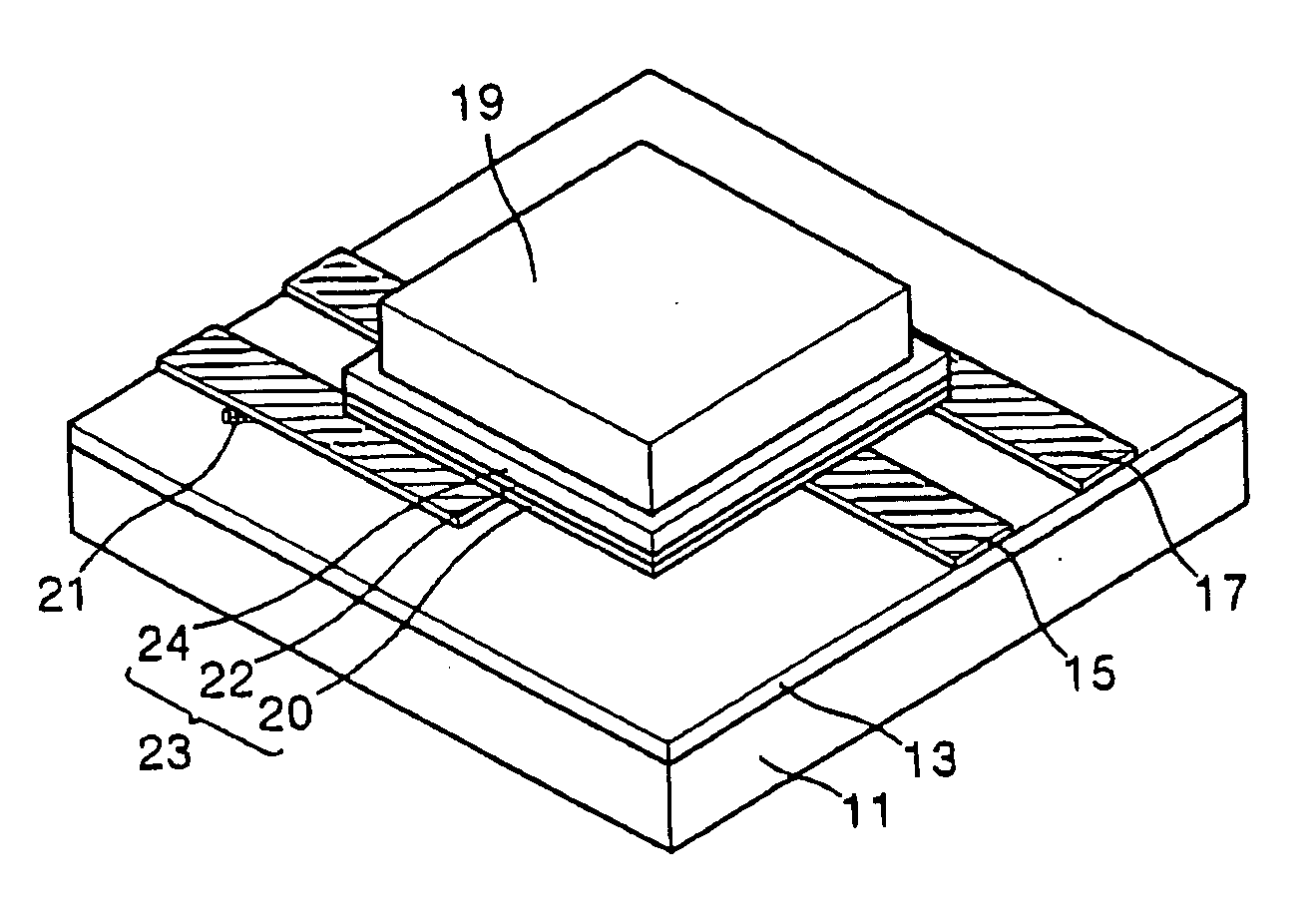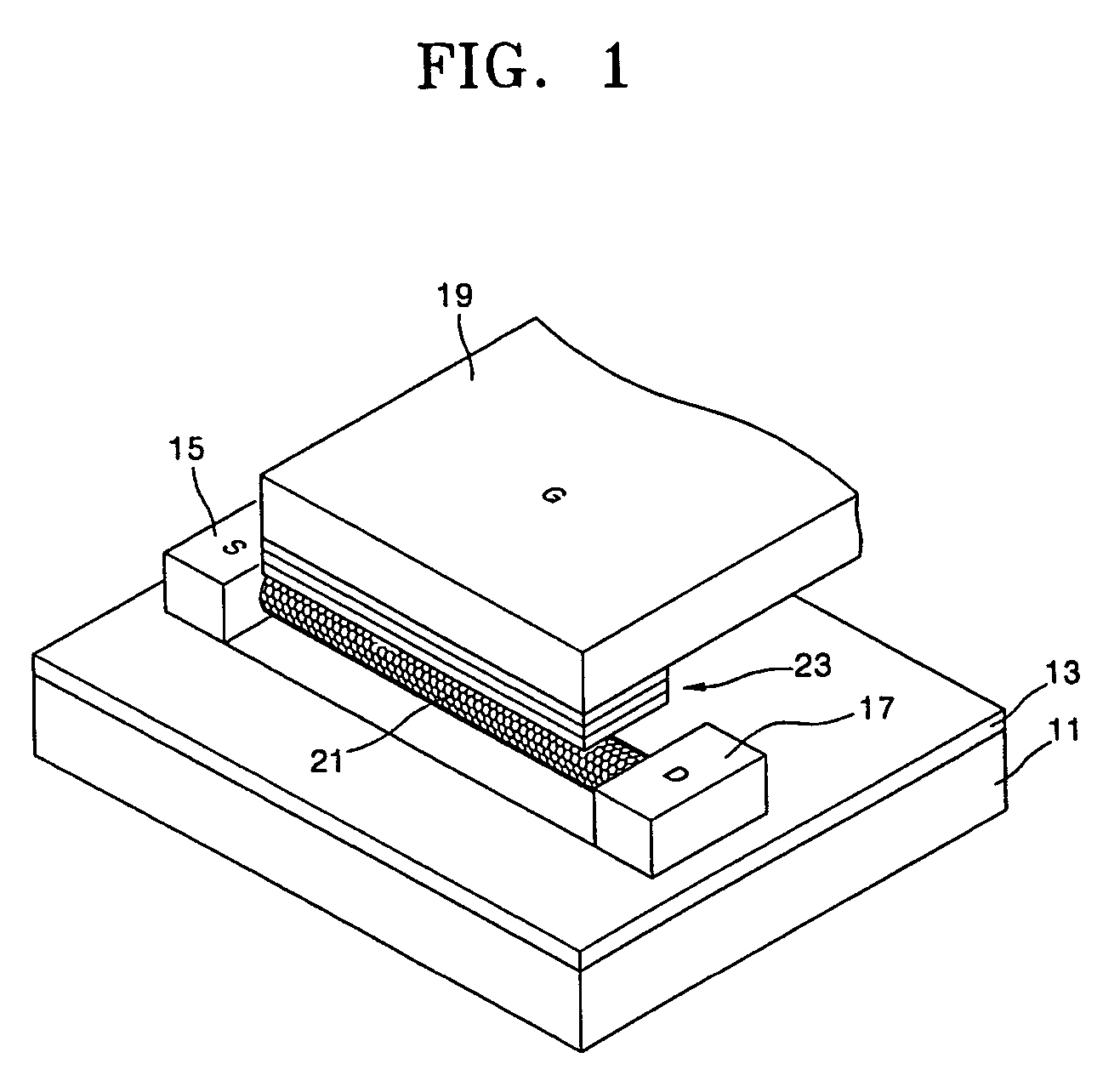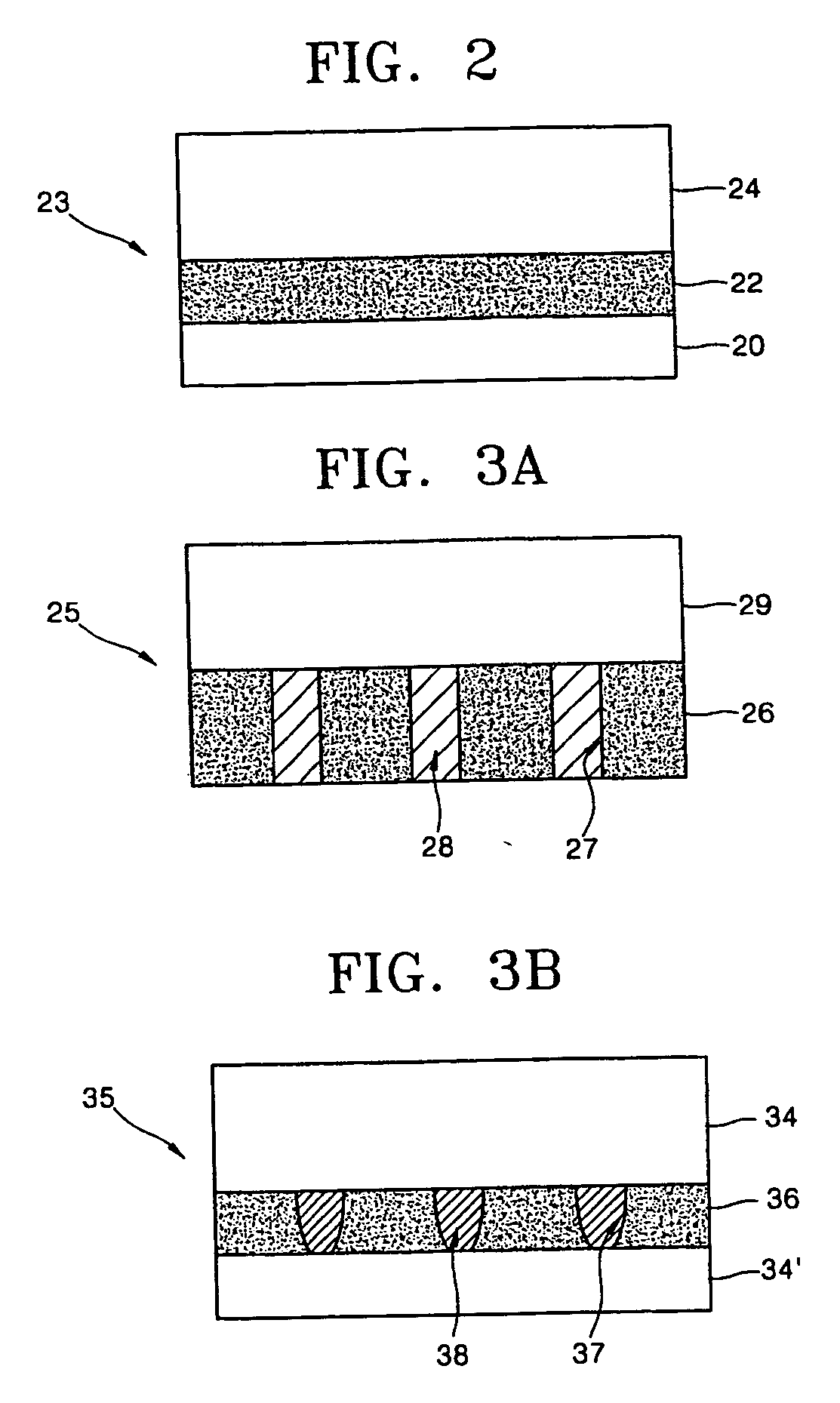Method of fabricating memory device utilizing carbon nanotubes
a memory device and carbon nanotube technology, applied in the field of memory devices, can solve the problems of inability to adjust the current flow, inability to manufacture memory devices, and inability to meet the needs of users, etc., and achieve the effects of high electrical conductivity, increased resistance and malfunction, and increased resistan
- Summary
- Abstract
- Description
- Claims
- Application Information
AI Technical Summary
Benefits of technology
Problems solved by technology
Method used
Image
Examples
Embodiment Construction
[0054] This application relies for priority upon Korean Patent Application No. 2002-7709, filed Feb. 9, 2002, and Korean Patent Application No. 2002-71398, filed Nov. 16, 2002, the contents of which are incorporated herein by reference in their entirety.
[0055] Referring to FIG. 1, a memory device according to an embodiment of the present invention includes a substrate 11, an insulating layer 13 deposited on the substrate 11, a source electrode 15 and a drain electrode 17 which are made of metal and separated by a predetermined distance from each other on the insulating layer 13, a carbon nanotube 21 which connects the source electrode 15 to the drain electrode 17 and serves as an electron moving channel, a memory cell 23 which contacts the carbon nanotube 21 and stores charges of electrons (or holes), and a gate electrode 19 which contacts the memory cell 23 and controls the movement of the electrons.
[0056] In FIG. 1, the source and drain electrodes 15 and 17 are installed on the ...
PUM
| Property | Measurement | Unit |
|---|---|---|
| thickness | aaaaa | aaaaa |
| size | aaaaa | aaaaa |
| drain current | aaaaa | aaaaa |
Abstract
Description
Claims
Application Information
 Login to View More
Login to View More - R&D
- Intellectual Property
- Life Sciences
- Materials
- Tech Scout
- Unparalleled Data Quality
- Higher Quality Content
- 60% Fewer Hallucinations
Browse by: Latest US Patents, China's latest patents, Technical Efficacy Thesaurus, Application Domain, Technology Topic, Popular Technical Reports.
© 2025 PatSnap. All rights reserved.Legal|Privacy policy|Modern Slavery Act Transparency Statement|Sitemap|About US| Contact US: help@patsnap.com



